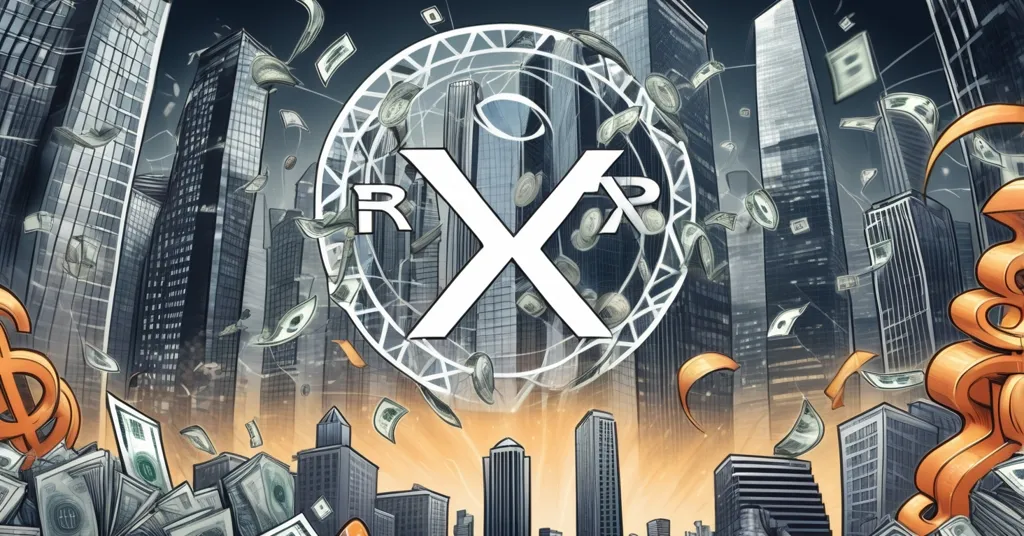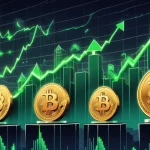XRP Price Prediction 2025: ETF Approvals to Trigger Historic Rally or Epic Flop?

XRP Price Prediction 2025: Will ETF Approvals Spark a Historic Rally?
October 2025 could mark a seismic shift for XRP, with looming SEC deadlines for ETF approvals potentially setting the stage for a dramatic price rally. As institutional interest collides with historically low supply on exchanges, the crypto community is buzzing with speculation about a game-changing supply shock. But amidst the hype, risks and regulatory uncertainty loom large—let’s cut through the noise and see what’s really at play.
- SEC Timeline: Critical decisions on XRP ETFs are due in October 2025.
- Supply Squeeze: XRP inventory on exchanges like Coinbase has dropped nearly 90%.
- Institutional Wave: Approvals could trigger $5-8 billion in inflows within the first 30 days.
The ETF Hype Machine
The crypto market is no stranger to regulatory milestones, but the upcoming SEC rulings on XRP exchange-traded funds (ETFs) in October 2025 have everyone on edge. For those new to the game, an ETF is a financial product that lets investors track the price of an asset like XRP without owning it directly. Spot ETFs, which are the focus here, require the fund to hold the actual cryptocurrency, meaning a green light from the SEC could unleash a torrent of institutional buying. Analyst Jake Claver projects inflows between $5 and $8 billion in just the first month post-approval—a number that reportedly outstrips the early days of Bitcoin ETFs. For more insights on potential price movements, check out this detailed analysis on XRP price forecasts post-ETF approvals.
“Inflows of $5 to $8 billion in the first 30 days are possible, far more than Bitcoin saw at its ETF launch,” says Jake Claver.
Why does this matter? It’s simple economics: when demand spikes and supply is tight, prices can go parabolic. If these ETFs get approved, firms will need to scoop up large quantities of XRP to back their funds, and they’ll be fishing in a very shallow pool. But before we start dreaming of lambos, let’s dig into why the supply situation is so constrained—and whether this hype train has any brakes.
XRP’s Supply Squeeze Explained
Right now, XRP’s availability on major exchanges is thinner than a paper wallet. Coinbase, one of the biggest platforms, has seen its XRP inventory plummet nearly 90% to around 100 million tokens. This scarcity isn’t just a random blip—it’s a setup for what’s known as a supply shock. Think of it like a sold-out concert: when everyone’s rushing for the last few tickets, prices get jacked up fast. If institutions start buying in bulk for ETFs, they’ll have to outbid each other for whatever crumbs are left on the market.
What’s more, the retail crowd holding XRP isn’t your typical flip-for-a-quick-buck crew. Often dubbed the “XRP Army,” these long-term believers are sitting tight, unlikely to sell unless prices hit lofty targets like $10 or even $25. This stubbornness further tightens the noose on supply, meaning any significant demand could force prices to climb just to lure holders into parting with their stash.
“Most retail investors hold XRP for the long term rather than trading it, which keeps supply on exchanges limited. If institutions begin buying XRP to back ETFs, prices will need to rise to persuade holders to sell,” notes Jake Claver.
Ripple’s Real-World Edge
ETFs might be the shiny headline, but XRP’s potential isn’t riding on regulatory roulette alone. Ripple, the company behind XRP, has been grinding away at real-world applications that could cement the token’s value beyond mere speculation. Through partnerships with major financial players like Santander and MoneyGram, Ripple has positioned the XRP Ledger as a go-to for cross-border payments. Unlike traditional systems like SWIFT, which can take days and charge hefty fees, XRP transactions settle in 3-5 seconds for fractions of a cent. That’s not just efficient—it’s a middle finger to bloated banking infrastructure, and we’re here for it.
Beyond banks, Ripple is also making waves with stablecoin initiatives and central bank digital currency (CBDC) pilots in countries like Palau, Montenegro, and Brazil. For the uninitiated, a CBDC is a digital version of a nation’s currency, often built on blockchain for speed and transparency. Ripple’s tech is being tested to power these projects, giving XRP a utility edge that many altcoins can only dream of. If these pilots scale, demand for XRP as a bridge currency in global finance could grow organically, regardless of ETF outcomes.
Market Trends: Liquidity Rotation to Altcoins?
Zooming out to the broader crypto landscape, there’s talk of a larger shift in play. Jake Claver suggests that ETF approvals could spark a “liquidity rotation,” where capital flows from Bitcoin—the market’s heavyweight—into riskier but potentially higher-return assets like XRP, Solana, Litecoin, and Hedera. Picture it as money moving from a safe savings account to a volatile stock in hopes of bigger gains. As Bitcoin often serves as the gateway for institutional cash, a maturing market might push investors to diversify, and XRP could ride that wave if the timing aligns.
“Upcoming ETF approvals could trigger a rotation of liquidity from Bitcoin into altcoins such as XRP, Solana, Litecoin, and Hedera,” predicts Jake Claver.
This isn’t a baseless theory. Bitcoin’s ETF launch in 2021 saw massive inflows, but it also paved the way for altcoin interest as investors sought the next big thing. If XRP gets its regulatory nod, it could capture a chunk of that rotating capital—especially given its unique niche in payments compared to Bitcoin’s store-of-value dominance.
Risks and Roadblocks: Let’s Cut the Crap
Before we get lost in visions of XRP at $25, let’s slam on the brakes and face reality. The SEC’s endless grudge match with Ripple could tank this whole ETF fantasy faster than a rug pull. Despite a partial win in 2023—where a court ruled XRP isn’t a security in secondary sales—regulatory uncertainty still hangs like a dark cloud. Will 2025 finally end this soap opera, or just add another cliffhanger? Even if approvals happen, there’s no guarantee of a moonshot. Institutional inflows might trickle rather than flood, or we could see a classic “buy the rumor, sell the news” scenario—where prices spike on hype before crashing as early birds cash out. Bitcoin’s ETF debut in 2021 had its own post-launch dips; XRP won’t be immune.
Then there’s the elephant in the room: Ripple’s centralized control over much of XRP’s supply. Unlike Bitcoin’s decentralized, proof-of-work model where no single entity calls the shots, Ripple holds a massive chunk of XRP in escrow. For decentralization purists like us, that’s a red flag—smells too much like a blockchain-flavored tool for the financial elite rather than a true disruptor. Add in the ever-present threat of market manipulation by “whales”—big players who can swing prices with massive trades—and you’ve got a recipe for volatility that could burn retail investors faster than you can blink.
Let’s not ignore the bigger picture either. Macroeconomic headwinds, like rising interest rates or a global downturn, could crush risk appetite across all crypto, XRP included. And while Ripple’s utility is promising, competitors like Stellar Lumens are also vying for the cross-border payments crown. Does XRP really stand out, or is it just the loudest voice in a crowded room?
A Bitcoin Maximalist’s Take
Now, let’s shift gears and view this through a Bitcoin-first lens—a perspective many of us hold dear, even if altcoins like XRP occasionally steal the spotlight. At “Let’s Talk, Bitcoin,” we see Bitcoin as the bedrock of this financial revolution: the ultimate store of value, the pinnacle of decentralization, and the safest bet for long-term wealth preservation. XRP, with its pre-mined supply and corporate backing, often feels like a distant cousin at best. But credit where it’s due—XRP fills a niche Bitcoin doesn’t aim to touch. Its speed and cost make it a practical tool for institutional and cross-border use cases, something Bitcoin’s slower, pricier transactions aren’t built for.
Still, as maximalists, we can’t help but squint at XRP’s reliance on Ripple’s partnerships and regulatory blessings. Is this really the freedom and disruption we champion, or just a repackaged version of the same old banking system with a blockchain veneer? While a post-ETF rally for XRP could be a win for shaking up traditional finance, our heart stays with Bitcoin’s unyielding independence. That said, if XRP’s rise in 2025 delivers a swift kick to the status quo, we’ll grudgingly tip our hat.
What’s Next for XRP?
As we inch toward October 2025, XRP sits at a crossroads. The ingredients for a significant rally are there: tight supply, potential institutional demand, and Ripple’s growing utility in global finance. Yet the crypto market is a fickle beast, and between regulatory hurdles, market shenanigans, and broader economic risks, this could just as easily turn into 2025’s biggest flop. For XRP enthusiasts, it’s a high-stakes gamble—part thrill, part terror. For the rest of us, it’s a reminder that while Bitcoin reigns supreme, the altcoin space still has some fight left. Will XRP be the dark horse of 2025, or just another mirage? Only time—and the SEC—will tell.
Key Questions and Takeaways for XRP’s Future
- What could XRP ETF approvals mean for its price in 2025?
Approvals might ignite a supply shock with limited exchange inventory and institutional buying, potentially driving inflows of $5-8 billion in the first month and pushing prices much higher. - Why is XRP’s supply so constrained right now?
Exchange stocks, like Coinbase’s, are down 90% to about 100 million tokens, and long-term retail holders—the XRP Army—are holding out for prices like $10 or $25 before selling. - Are there other drivers for XRP’s growth beyond ETFs?
Absolutely. Ripple’s partnerships with banks like Santander, stablecoin projects, and CBDC pilots in Palau and Brazil add real-world utility, potentially fueling organic demand. - Could XRP outshine Bitcoin’s ETF debut performance?
Analysts suggest XRP ETF inflows could eclipse Bitcoin’s early numbers, hinting at a stronger initial market reaction if the SEC gives the nod. - Is a liquidity shift from Bitcoin to XRP realistic?
It’s plausible. Market trends point to capital rotating from Bitcoin to altcoins like XRP post-ETF approvals, though Bitcoin’s dominance will likely keep many investors anchored. - What risks could derail XRP’s 2025 potential?
Regulatory uncertainty with the SEC, Ripple’s centralized supply control, market manipulation by whales, and macroeconomic downturns could all spoil the party.



